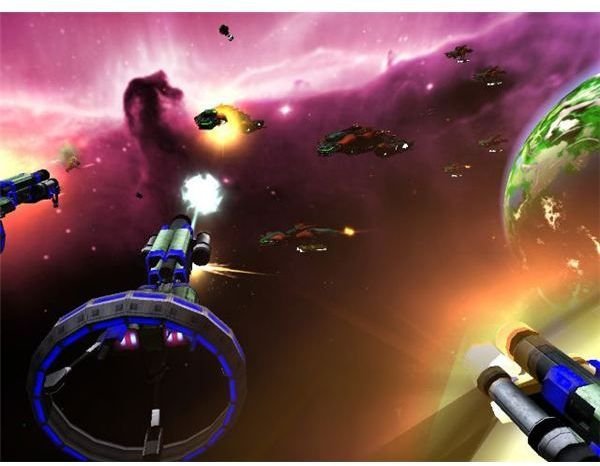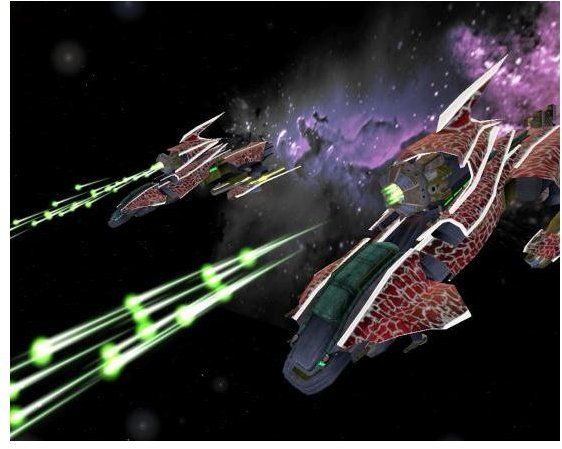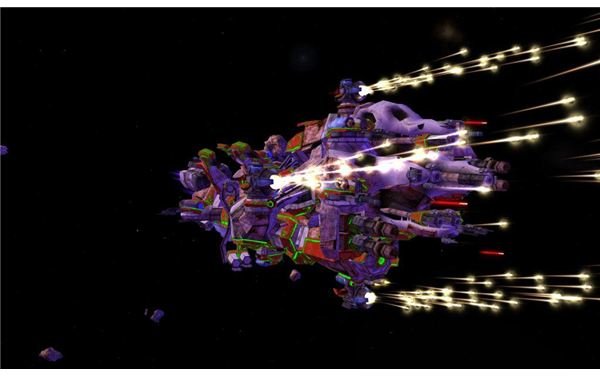Sword of the Stars Race Guide

A Race to the Finish
Sword of the Stars has many races, and each one plays different from the others in important ways. As a result, it is possible that even a very general strategy which works with one race won’t work the others. This guide to the races in Sword of the Stars gives an over-view of what they’re about and how to play them.
Humans
The version of humanity in Sword of the Stars uses a means of propulsion called a node drive. The node drive is like hyperspace in Babylon 5 and other Sci-Fi shows. The node drive allows access to node space, which can transport ships at very high spends between specific destinations. The advantages of node drive are those of speed and range. Anyone playing the Humans should take advantage of this. It allows for explosive early game colonization which turns into a large and power late-game empire.
The downside of node drive is that it restricts movement. Other races may be able to go directly from one star to another, while humanity has to jump through several stars because no direct node space path exists. Also, node drive creates a strategic disadvantage in that ships using node drive can’t be communicated with and so can’t have their orders changed. If you send a fleet off to another star, and learn during the next turn that it is being massively reinforced, there is nothing that can be done.
The military, production, and research abilities of humanity are all run of the mill. They are not particularly good or bad in these areas. Humanity is therefore a good choice for new players.
Hivers
The Hivers are the typical insectoid race. They are generally regarded as extremely powerful and fearsome, and with good reason. Their ships are slow, but armed and armored to the hilt. A single Hiver ship can take on multiple vessels from any other race. The power of their battleships makes them extremely difficult to beat when they’re on the offensive.
However, the Hivers have no faster than light drive. To travel at FTL speeds they need to use gates. And those gates must be deployed to other worlds by traveling to them at sub-light speeds. This means they expand very slowly. It also means that planning is of absolute importance. When a Hiver fleet is sent off to a new world, it needs to be ready for whatever is going to be there. Otherwise, the gate and the entire fleet might be lost. The advantage however, is that gates allow instantaneous travel - so once a world is made part of your empire you’ll be able to send ship over instantly from any other world you control.
Because of the amount of planning required with the Hivers, they’re not a good pick for new players.
Liir

The most bizarre race in Sword of the Stars, the Liir are basically space-faring whales. As a result, their ships have a large mass but little room for weapons and armor (when the pilot of your ship is a whale you don’t have as much room for everything else). This mass could also cause a problem with propulsion, but the Liir have found a way around it. Their FTL drive, called stutter drive, moves their ships short distances at FTL speeds. Because this drive basically teleports the Liir ship a short distance, there is no inertia. This makes Liir ships very fast and maneuverable. It also allows Liir ships to move quickly between worlds and gives the Liir and advantage when intercepting incoming fleets.
As mentioned, Liir ships are somewhat weak in combat. However, the Liir are strong in research. The Liir can be fragile and somewhat frustrating to new players, particularly those who like to go into situations with all guns blazing. By the late game, however, their combat weakness tends to be minimized by their strength in technology, which allows the Liir access to better equipment.
Morrigi
The Morrigi use a FTL drive which becomes faster as more ships travel in a fleet. This mechanic makes the Morrigi rather unique in that it is often easier for the Morrigi to respond with massive force than with adequate force. A large fleet of Morrigi ships can travel long distances in a very short period of time. Those who don’t like carefully splitting up fleets to defend different areas may like the way Morrigi’s FTL mechanic function.
The Morrigi are good at trade, and this makes them a economic powerhouse. It is more important to focus on production limitations than economic limitations in the mid to late game. This can be a good thing for newer players, as it helps reduces economic micro-management. This also means that the Morrigi tend to be good at research since economic success can be poured directly into research by devoting more money to research projects.
Zuul

The aggressive Zuul are the barbarians of Sword of the Stars and have a number of interesting mechanics. Due to their aggressive nature, the Zuul are always over-working the resources of planets they occupy. Resources are drained at a base of ten per turn and can be drained much more quickly if more production capacity is required. The Zuul can also visit other worlds and take slaves. These slaves give bonuses to production as well. Their ships are inexpensive as well, which mean the Zuul can build a huge number of vessels in a short period of time. However, the resource-draining will eventually render planets nearly worthless, so constant expansion is a must. The Zuul also are not good at research.
The Zuul’s method of FTL drive is the rip bore. A shipped equipped with a rip bore must be sent to another planet. In doing so it creates a lane of travel like that of the node space used by humans. The Zuul can expand extremely quickly as long as enough rip bores are available to keep adding lanes of travel.
Because of the constant expansion required, the Zuul can be hectic for some new players, but they’re a good choice for anyone who likes to first shoot and ask questions never.
Tarka
Of the races in Sword of the Stars the Tarka may be the less imaginative in terms of mechanics. Their means of FTL transportation is simple hyperdrive. They can go anywhere they wish at a reasonably fast speed without needing to construct anything before hand. Hyperdrive isn’t as fast as, say, node drive, and so the Tarka can be a little slow getting on their feet.
However, the Tarka are extremely well balanced, perhaps even more so than humanity. Tarka ships are reasonably strong both offensively and defensively, and they don’t cost a great deal to build. As a result the Tarka military is plentiful and easy to use. This makes the Tarka a good choice new players, particularly those who find the maniac expansion of humanity a bit over-whelming.
